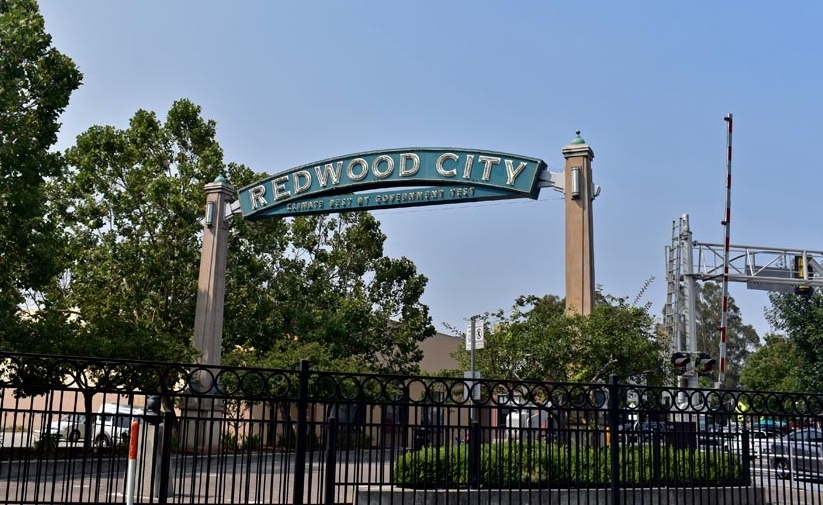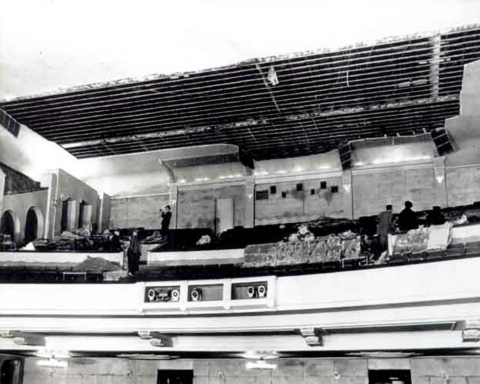Early next year will be the 27th since the appearance of the now-legendary billboard touting Redwood City as “Palo Alto Without the Attitude.”
Climate Magazine Editor Janet McGovern, sentimental slob that she is, apparently thought the 26-and-a-half-th anniversary was more than ample reason to revisit the topic, providing further evidence that journalists have only a theoretical relationship with math. Anyway, she backtracks on the whole matter in the current edition of Climate and makes passing reference to a contest I initiated while writing a daily column for the Peninsula Times Tribune, one of many print publications I helped drive out of business. In the interests of full disclosure, I initiated several contests while writing a daily column. Writing five days a week was a constant search for topics I could milk.
The contest was based on a thorough mocking of the billboard (“Redwood City – Palo Alto Without the Attitude. Or the Restaurants. Or the Stores. Or a Vibrant Downtown” was just one of the smartass responses I wrote). I then invited people to send in their own slogans – for Redwood City and Palo Alto. The whole thing quickly got out of hand. In the pre-social media environment, hundreds of written entries were sent in by something we used to call the U.S. Mail. That number is skewed a little by one woman, Lori Rogers, who sent in 48 entries. One of hers was a winner: “Now that we have your attention.” As I recall, her win was not unanimous among the judges, but some of us would have felt badly if we rejected all 48.
The winning entry for Palo Alto was by Heather White: “This billboard must be removed (Municipal Zoning Ordinance 1,732,664),” and it’s still pretty good after all these years. Other runners up included “Palo Alto – Where process is our most important product” and “Redwood City — No attitude. No stores.” The latter reflected most of the Redwood City entries, which included “Podunk with a complex” and “Attitude without the aptitude.” There also was this entry: “Get Rid of Simon.” Unfortunately, it was sent in anonymously, or it might have won.
Interestingly, the Times Tribune offered a $100 shopping spree to each of the winning entries, and one is left to ponder what kind of shopping spree you could have had in downtown Redwood City in 1993. Some merchants opposed putting up the billboard for fear it might alienate Palo Altans and they wouldn’t shop in Redwood City. You can’t make this stuff up.
The leader of the opposition was a guy who owned a used furniture store he fancied an “antiques” store. It provided many of us with the opportunity learn the difference between an antique and something that was just old.
THERE’S A POINT IN HERE SOMEWHERE: And the point is that in 1993, downtown Redwood City was not much, on its way to nowhere special. And that reality, which seems lost by those who say they miss the “old” Redwood City, drove a group of far-sighted city leaders and staff to set in motion a new reality that is decidedly more interesting, meaningful and substantive than the array of sandwich shops and used furniture stores that defined the place.
Look at election results in the early- to mid-2000s and you see a council that was elected and re-elected by healthy margins and that was united in its determination to make Redwood City into something. This wasn’t revolutionary thinking. It was a very full and complete reflection of what the residents wanted – a there that was somewhere.
But in 1993, boy, you sure could find parking right in front of the hardware store while you ran inside to get a new key made. One of the things I learned while writing the column all those years ago is that lots of empty parking spaces is not a good indicator of a vigorous retail environment. It was easy to park there because nobody went there. Now, you hear complaints from people that they can’t find a place to park, a problem I have never had, although I do have to walk a couple of blocks on occasion to get where I’m going.
Which is what I had to do recently when I went to the Courthouse Square on a Friday night to listen to live music. And then again, the next night when I went to Angelicas to hear a jazz combo, two things so far removed from the “old” Redwood City as to invite hilarity. On the way to each venue, I passed one restaurant after another, packed to the walls with young people, who were eating and drinking and listening to music. Some of the music was loud and it reminded me of another pithy comment: “If it’s too loud, you’re too old.”
This is a good thing. Vital, alive, full of energy, prosperous, youthful and incalculably better than anything you might have seen in downtown Redwood City in 1993.
THE CAPITAL OF THE PENINSULA: The aforementioned Times Tribune was a merger of the Redwood City Tribune and the Palo Alto Times by its owner, the Tribune Company of Chicago. Tribune Company since has developed quite a record of buying newspapers and killing them off with budget cuts, staff layoffs and demands for greater profit margins. I like to think the Times Tribune was at the cutting edge of this charming practice.
What the Tribune Company did here was take two 100-year-old, well-established local newspapers and merge them into one regional paper. Their view, from the Tribune tower in Chicago, was that Silicon Valley was spreading out, spewing wealth and self-importance in its path and that Palo Alto was going to become the capital of the Peninsula. They never understood that Redwood City and Palo Alto were quite different and a person who identified with one would never identify with the other. And one would not read news about the other.
Undoubtedly, it looked like sheer genius from a tower in Chicago. It didn’t work. The merged newspaper went out of business in a scant 14 years, and Palo Alto and Redwood City were without two credible and serious daily newspapers that were rooted in their respective communities, the kind of connection that can only be built over a century.
Still, at the time, it was valid to believe that Palo Alto would become, if it wasn’t already, the central city of the Peninsula, a cultural, entertainment and business hub around which the rest of the area would revolve. (Old joke: How many Palo Altans does it take to screw in a lightbulb? One – to hold the lightbulb while the rest of the world revolves around it.)
Certainly, Palo Alto is a vibrant downtown community with high-end restaurants and a thriving retail that any city would hope to emulate. But their unique brand of insularity denied Palo Alto something that Redwood City has become – the Peninsula’s gathering place. I still recall when the Super Bowl was held at Stanford two lifetimes ago, Palo Alto sniffed that this unseemly sports spectacle was being held at Stanford, not Palo Alto. The city did virtually nothing to act as the host city. Just imagine if it had been in Redwood City, which continues to retain its hometown, Main Street USA, gee-whiz brand of enthusiasm.
THE UNEASINESS OF MOVING FORWARD: There is Central Park in San Mateo, Burlingame Avenue in Burlingame, Castro Street in Mountain View and, of course, University Avenue in Palo Alto. There are gathering places all throughout the Peninsula. But there is nothing like Redwood City as a place for people from all over the region to gather for communal events and from which the downtown scene benefits in ways that were not even a vision in 1993.
All of this makes longtime residents uncomfortable and they long for a time that didn’t exist, a sense of what Redwood City must have been, but, in fact, never was. Discomfort is the price of change. But if such an idyllic time ever existed, it’s done. There is no going back. Time doesn’t work in reverse.
If 25 years ago, we had a council determined to transform downtown Redwood City, we now have a council that reflects the uneasiness of the most vocal of Redwood City’s residents. While it is unlikely the most outspoken represent the broad views of the larger community, they are the loudest and they are most politically active and they have the council they want – one that is decidedly less bold and certainly not nearly as unified behind a vision of what could be made of what this city has to offer.
What is the vision of the current city leadership? To tinker at the edges and try to minimize the impacts of the changes that have taken place? To pull the reins of change and to respond rather than initiate it?
In 1993, the mere statement – Palo Alto without the attitude – was ironical at best and simply incorrect.
The greater irony is that it is truer now than it ever was in 1993. The council that was elected on the heels of that billboard recognized that rare moment in time when change was possible and could be used to set a new course, to determine events rather than have them dictated to us. That moment still exists. The challenge now is to transform the entire community into a place that is livable and affordable – in essence, to do with housing what was done with the downtown. In that sense, Redwood City may hearken back to the place some people think it was then – welcoming, open, available to all.
The only question is whether there is a unified will to press the advantage.
Contact Mark Simon at mark.simon24@yahoo.com.
*The opinions expressed in this column are the author’s own and do not necessarily reflect the views of Climate Online.






